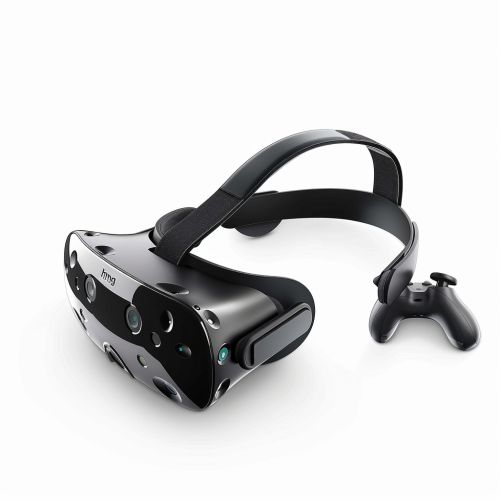HTC Vive
Introduction
The HTC Vive is a virtual reality headset developed by HTC and Valve. The headset uses "room scale" tracking technology, allowing the user to move in 3D space and use motion-tracked handheld controllers to interact with the environment.


Development
The HTC Vive was unveiled during HTC's Mobile World Congress keynote in March 2015. Development kits were sent out in August and September 2015, and the first consumer version of the device was released on April 5, 2016. The development of the HTC Vive was a collaboration between HTC and Valve, a well-known video game developer and distributor. Valve's involvement was driven by their interest in producing a superior virtual reality experience as part of their Steam platform.
Technology
Headset
The HTC Vive headset uses a 2160 x 1200 pixel, low persistence liquid crystal display. This technology reduces motion blur and maintains a clear visual experience for the user, even as they move within the virtual environment. The headset also features a 90 Hz refresh rate, which ensures a smooth visual experience and reduces the likelihood of VR-induced motion sickness.
The headset uses two screens, one for each eye, which allows for stereoscopic vision. This mimics the way human eyes perceive depth in the real world, enhancing the sense of immersion in the virtual environment.
Tracking System
The HTC Vive uses a tracking system known as Lighthouse. Developed by Valve, Lighthouse uses two base stations that emit pulsed IR lasers to track the 3D position of the headset and controllers. This allows for "room scale" VR, where users can walk around and interact with a virtual environment in a physical space of up to 5m x 5m.
Controllers
The HTC Vive comes with two wireless, motion-tracked controllers. Each controller has a trigger, a trackpad, and several buttons, allowing for a wide range of potential inputs and interactions within the virtual environment.
Software
The HTC Vive is powered by SteamVR, a software framework developed by Valve as part of their Steam platform. SteamVR supports the OpenVR application programming interface, which allows developers to create content for the HTC Vive regardless of the underlying hardware platform.
The HTC Vive also comes with a number of applications and games designed to showcase the capabilities of the system. These include Tilt Brush, a 3D painting application, and Job Simulator, a game that humorously simulates mundane jobs in a world where robots have replaced all human jobs.
Reception
The HTC Vive has been generally well received by critics. The headset's room scale tracking and motion controller capabilities have been particularly praised, with many noting that these features offer a level of immersion and interactivity that is currently unmatched by other VR systems.
However, the system has also been criticized for its high cost and the amount of physical space required for the room scale tracking to function effectively. Additionally, some users have reported issues with the system's software and setup process.
